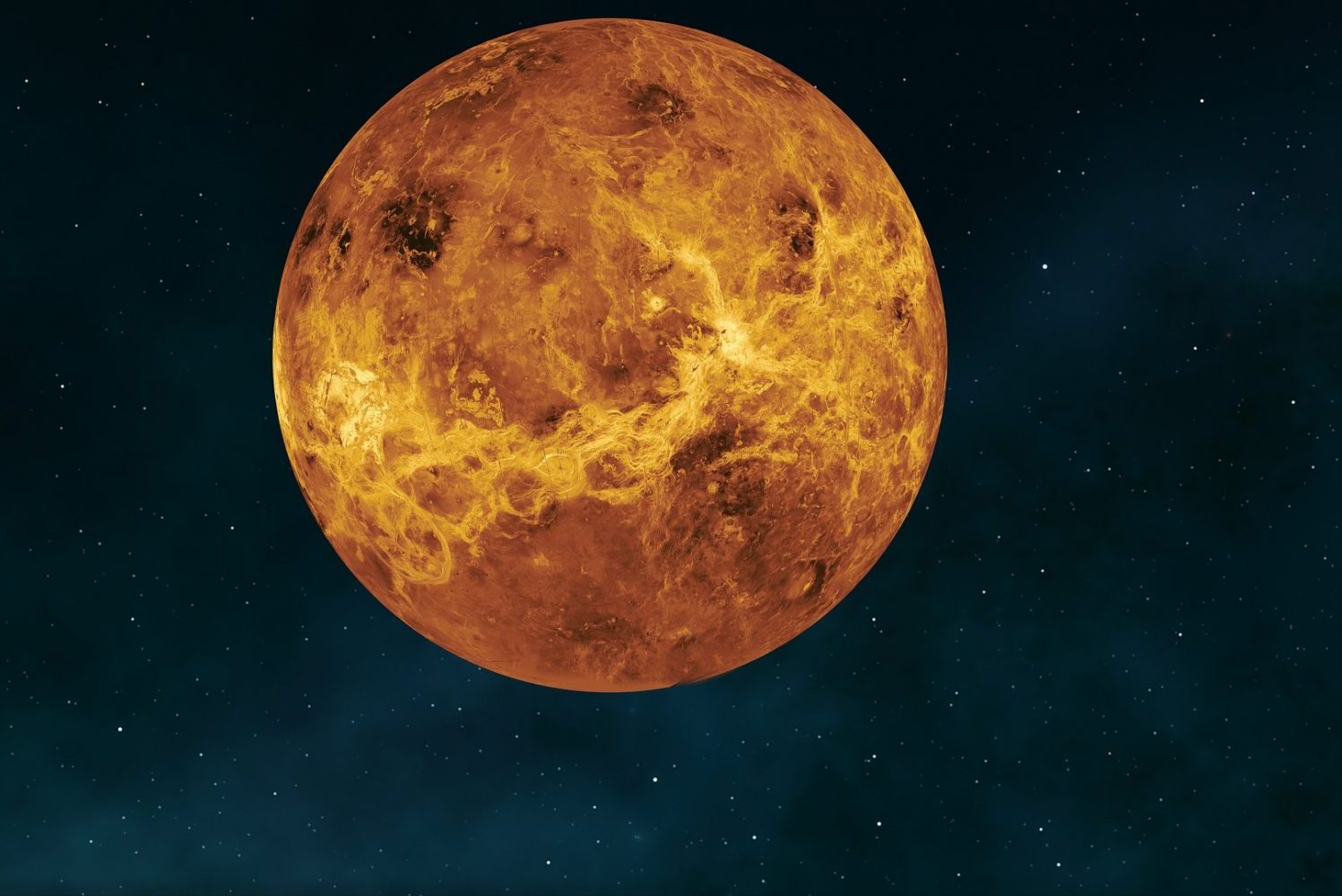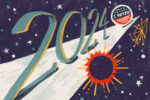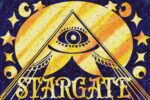Scientists recently found phosphine in Venus’ atmosphere. On Earth, phosphine is only produced by living creatures. While the compound could be produced by other processes, this hints at the possibility of life on Venus. This discovery is especially exciting as Venus was long thought to be inhospitable to life.
Venus is the planet closest in size and location to Earth, earning it the nickname “Earth’s twin.” Venus also has an incredibly dense atmosphere that has crushed probes sent from Earth. Due to the greenhouse effect, heat on Venus gets trapped and bounces back and forth. Venus is thus the hottest planet in our solar system despite being just the second farthest from the sun. Earth’s twin is more of a warning of what could happen on Earth because of global warming as opposed to a place that astronomers believe could host human visitors or other creatures.
In the spirit of this new discovery, here are four novels that explore life on Venus.
“The Space Merchants” by Frederik Pohl and Cyril M. Kornbluth (1952) is a satirical novel about colonizing Venus. In the novel, an extremely overpopulated Earth is run by corporations, not governments. Advertising is aggressive and the best-paid profession. The protagonist, Mitch Courtenay, is an advertiser working on a push to attract colonists to Venus. He slowly starts to lose his sense of reality as he realizes that the psychological techniques he relies on to create campaigns are being used on him as well.
Despite being published nearly 70 years ago, this mystery and science fiction novel has an enduring pull. An overpopulated Earth that bends to the will of enormous transnationals is familiar to every Earthling now. Advertising permeates every aspect of our lives — although now it’s on the internet, which Pohl and Kornbluth failed to predict. Despite being written in the 1950s by white American men, this novel looks critically at colonization. Even now, many science fiction authors love to write space operas where humanity’s expansion to every corner of the galaxy is portrayed as an unquestioned good. This novel criticizes that belief system and further supports natural resource conservation.
“2312” by Kim Stanley Robinson (2012), a Nebula award winner, imagines a future where humanity has colonized the solar system. The novel focuses on the inequality between humans living at different points all over the solar system. The main character, Swan, born on Mercury, is on a quest to understand her grandmother’s death. At one point in the novel, she visits Venus. While Mars is already terraformed, Venus is still a difficult place to live. There, megacorporations have united together to spend trillions of dollars to terraform the planet to make more space for an expanding humankind. The groups are terraforming Venus by placing a huge umbrella in front of the Sun, thus cooling the planet and allowing life to thrive.
“Leviathan Wakes” and “Caliban’s War” by James S. A. Corey (2011), now a TV show, is a combination detective and space exploration novel. A motley crew of interstellar travelers traverse the solar system against a backdrop of two superpowered Earth and Mars. While the planets hate each other, they work together to subdue the humans who live on the asteroids between Mars and Jupiter. The planets ignore Venus. Not to spoil anything, but life on Venus happens somewhere.
There’s a lack of science fiction that explores life on Venus as opposed to that of Mars. As our understanding of our universe has grown, science fiction, too, has changed. In the late 1800s and early 1900s, science fiction often focused on the possibility of life on Venus. Even then, telescopes pointed toward the planet couldn’t see any features, unlike the storms visibly raging on Jupiter or Mars. Astronomers theorized the planet was either desert, ocean or swamp. Writers still assumed that despite a homogenous environment, the close planet would still have some characteristics similar to Earth. Classic novelists like C. S. Lewis, H. P. Lovecraft and Robert A. Heinlein theorized about life on Venus. Many imagined the planet to be a harsh, humid swampland.
But even then, fiction focused on Mars as telescopes had seen long, curving paths on the planet. Scientists then mistakenly labeled the planet as covered in water canals. Imagining aliens floating on water is easier than picturing intelligent life behind a seething mass of opaque cloud cover.
In 1962, Mariner 2 flew by Venus and shocked scientists with its report of the planet’s heat. After this discovery, Venusian life was portrayed infrequently. Scientific understanding led to Martians being the aliens to fear, or befriend, no one else.
Now, scientists believe that microbial life could exist in our solar system. Bacteria or some other form of tiny life could be deep in the desert of Mars, or the water geysers of the Saturnian moon Enceladus, or the methane lakes of the Saturnian moon Titan. However, most have given up hope of finding intelligent life near us. These days, science fiction about an intelligence comparable to ours imagines aliens traveling from a star completely unlike our own. Scientific understanding will undoubtedly continue to shape the stories told to make sense of the universe.

















